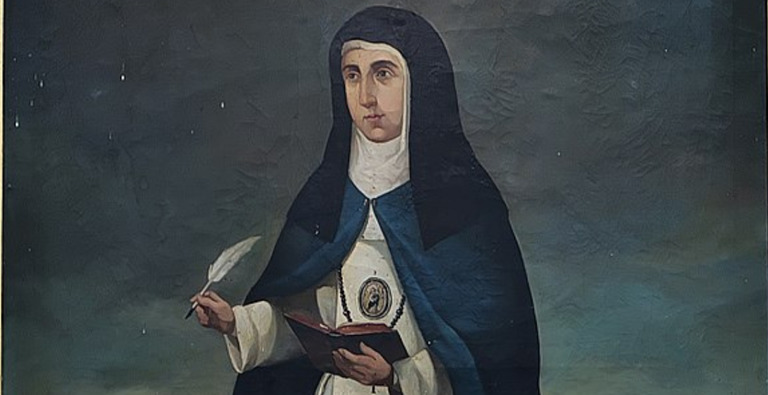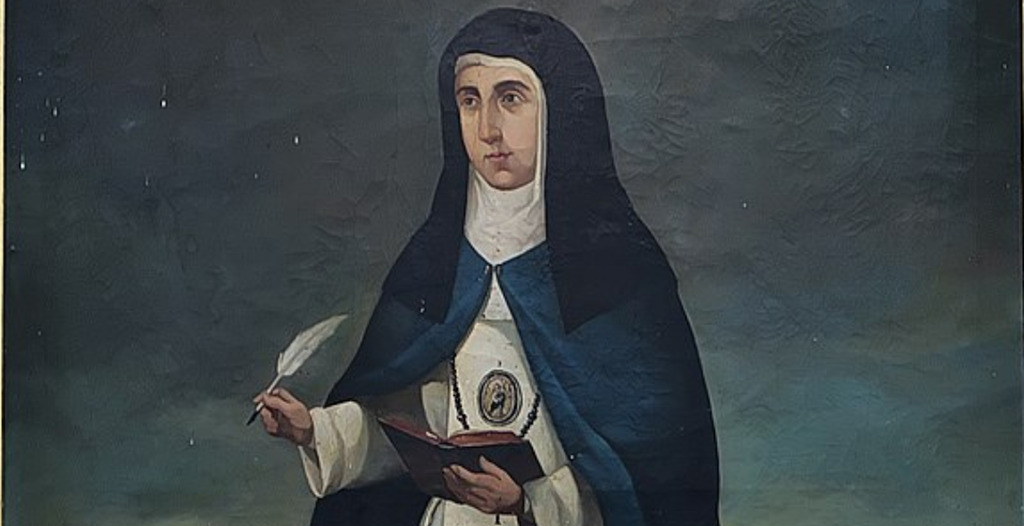Birth
April 2, 1602 in Ágreda, Soria, Spain
Death
May 24, 1665 in Ágreda, Soria, Spain
Religion
CatholicMary of Agreda entered into a convent belonging to the Order of the Immaculate Conception. She took holy orders at the age of 16 and became an Abbess only one year later. Her writings were mystical and ascetic; they defended the immaculate conception, and she claimed her book had been dictated by the Virgin Mary. Her theology was supported by the Second Vatican Council.
Personal Information
Name(s)
Mary de Ágreda (also known as María Coronel y Arana, or María de Jesús de Ágreda, or La Venerable, or Sor María), from the Order of the Immaculate Conception.
Date and place of birth
April 2, 1602 in Ágreda, Soria, Castile and León, Spain
Date and place of death
May 24, 1665 in Ágreda, Soria, Castile and León, Spain
Family
Mother: María Coronel y Arana, originally from a Hidalgo wealthy family of Biscay.
Father: Francisco Coronel. In his fifties, he entered the Franciscan house of San Antonio de Nalda.
Marriage and Family Life
Both parents were very religious and conceived 11 children, only four of whom survived into adulthood. Mary’s mother, Catalina, experienced revelations as she told her confessor, fray Juan de Torrecilla, to transform her household into a convent.
Both the mother and her two surviving daughters, María de Ágreda and her sister Jerónima, entered this new convent belonging to the Order of the Immaculate Conception. Her two brothers entered the Order of the Franciscans in Nalda’s convent, Soria.
María, her mother, and sister were the founders of the discalced branch of the Order of the Immaculate Conception in Ágreda.
María took holy orders at the age of 16.
With a papal approval, Mary of Ágreda was made Abbess. She managed the Ágreda Convent until her death in 1665.
Education
No specific mention of education, but probably had received a girl’s pious education at home.
Religion
Catholic. Order of the Immaculate Conception, Discalced branch.
Transformation(s)
She was born in a devout Catholic family, created her own Order of Immaculate Conception, Discalced branch, and became a theologian.
less
Significance
Works/Agency
Her writings are mystical and ascetic. She defended the immaculate conception of the Virgin, along the lines of the Marian theology of the Scottish John Duns Scotus (1266-1308).
Her main work is Mística Ciudad de Dios (Mystical City of God), published in 1670 in Madrid by an anonymous press and forbidden by the Spanish Inquisition, but it was immediately accepted again.
In 1696 Mística Ciudad de Dios was printed again in Antwerp by Henrico and Cornelio Verdussen.
From 1643 to 1665 Mary kept an epistolary relationship with Philip IV of Spain. A total of 600 letters that deal with social, political, and religious matters have been found.
She also maintained correspondence with Pope Clement IX before he became Pope.
Reputation
Ágreda claimed that the book had been dictated by the Virgin Mary herself and defended the Virgin’s immaculate conception (espoused as well by the Spanish Franciscan order, and most Spanish universities, including Salamanca, Granada and Madrid).
In 1681 the Inquisition or “Holy Office” in the Vatican censured Mística Ciudad de Dios and included it on the Index of Forbidden Books, but Ágreda was not condemned on the grounds of “Blessed Innocence.”
Ágreda is a “Venerable” but she is not a canonized saint.
Legacy and Influence
The Second Vatican Council under the pontificate of Pope John XXIII, from 1962 until 1965 under Pope Paul VI, accepted and supported Ágreda’s Marian theology.
less
Controversies
New and unfolding information and interpretations
She expounded on Marian spirituality, defending filial devotion, imitation, and invocation to the Virgin Mary as mother and female master of the Church.



Comment
Your message was sent successfully